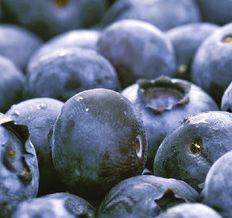
Chilean fresh blueberry exports are expected to reach 115,000 tonnes during the 2019/20 season, an increase of 4 per cent on the previous season. The growth comes from new plantings and a switch to more productive varieties.
According to the Chilean Blueberry Committee, acreage has increased by around 4,000ha over the last four years.
This new area will come into full capacity during the coming years when the new plants reach full production.
This season, however, climatic conditions will reduce the productive potential due to a lower accumulation of chill hours registered during the winter, as well as a series of frost events that have been occurring since August.
In addition, the committee said its members have decided not to export a number of older varieties with insufficient shelf life.
“Due to all these factors, we estimate total production of around 160,000 tonnes, with 115,000 tonnes being exported as fresh fruit, 41,000 tonnes going into the processed market and 4,000 tonnes for the domestic market,” the committee said.
The new planting statistics show a net growth of 2,500ha, reaching a total of 18,374 planted blueberry hectares in Chile.
In previous years, the total acreage was stable, with new varieties essentially replacing older varieties. However, this net growth in the planted surface will increase production, especially through the renovation of varieties with better quality and higher yields.
The bulk of this growth (92 per cent) is concentrated in the regions of Maule, ñuble and Bio Bio, the main production areas in the country, further strengthening their position in the market.
“Another important issue that must be taken into account is the early sprouting of blueberries in Chile this season,” the committee said.
“The lower winter chill hours and days with higher temperatures in August have ‘woken up’ blueberries earlier and the fruit is one week ahead in development compared to a normal year.”
The Committee plans to distribute an updated forecast in early October, which will consider the effect of September weather conditions on total export volume as well as the expected impact on harvest dynamics during the 2019/20 season.



